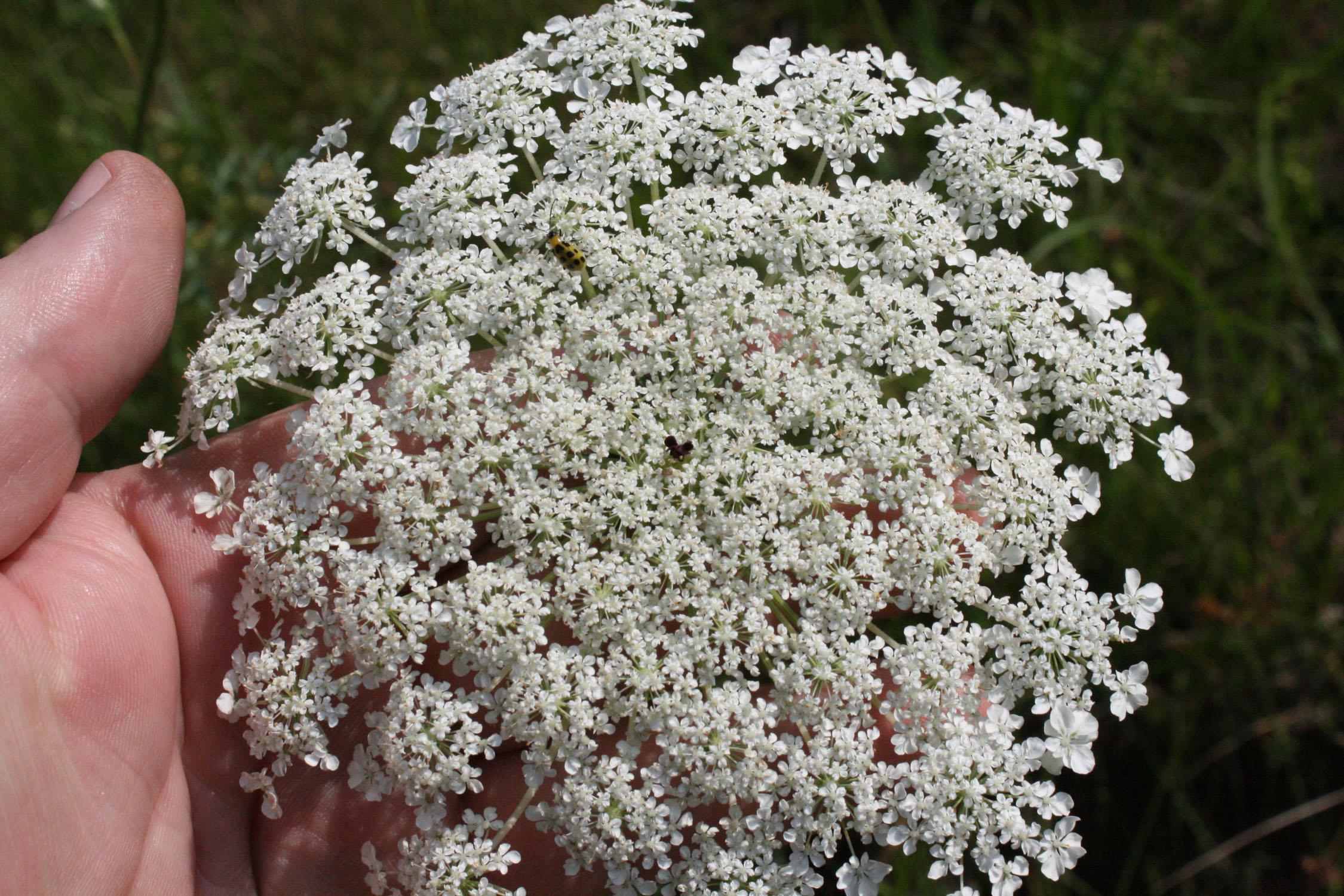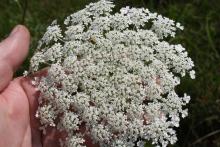Information Possibly Outdated
The information presented on this page was originally released on May 19, 2014. It may not be outdated, but please search our site for more current information. If you plan to quote or reference this information in a publication, please check with the Extension specialist or author before proceeding.
Queen Anne's Lace thrives in landscapes
A dizzying array of new plants for the home landscape and garden are promoted every year, and several got their starts along our roadsides and ditches.
Horticulturists often say that many of our landscape plants are only a step or two out of the ditch. One of my favorite ditch-loving varieties that bloom each spring is Queen Anne’s Lace. Some people consider them weeds, but I believe they have many worthy qualities.
Introduced to North America by the European settlers, Queen Anne’s Lace is sometimes called wild carrot, and indeed, this plant does develop a yellowish-white taproot that is edible. Our modern carrots were selected from this plant. Carrots are orange because the plant breeders of the 16th century wanted to honor the royal family of the Netherlands, known as the House of Orange. Modern garden carrots come in many other colors, even back to the original white and yellow.
Queen Anne’s Lace is a biennial, which means it takes two years for the pretty flower heads to develop. The flower stems can reach up to 4 feet tall and readily sway in the wind either from Mother Nature or cars zooming past. I consider Queen Anne’s Lace a true 55 mph (or faster) flowering plant.
The flower head is a delicate white to pale yellow-white, flat-topped structure. Each lacey flower is comprised of up to a thousand or more tiny individual flowers. Each flower head can produce many thousands of seeds, so you can see its potential to spread.
A curiosity I find interesting is that most, but not all, have a single dark red or maroon sterile flower in the center of the flower head. Like many botanical oddities, there is an interesting story about this single red flower.
Since the flower is lace-like, it was popular to use the flower as a hobby pattern to tat lace doilies. Queen Anne was an avid tatter and one day pricked her finger and a single drop of blood dripped onto the center of her doily.
There’s disagreement about which Queen Anne is the flower’s namesake. Two potential sources were members of the Stuart royal family: Anne of Scotland (1574 - 1619) or Anne (1665 - 1714), the daughter of William and Mary. A more gruesome story involves Anne Boleyn (1507 - 1536), who had the misfortune of losing her head after marrying King Henry VIII. The flat-topped flower head represents her lace collar and the red flower in the center represents the obvious.
Most home gardeners probably won’t plant Queen Anne’s Lace on purpose in their gardens, but there are benefits. Eastern Black Swallowtail butterflies lay their eggs on the plant and the colorful caterpillars eat the leaves. The flower heads also attract pollinating bees and other insects with its nectar.








